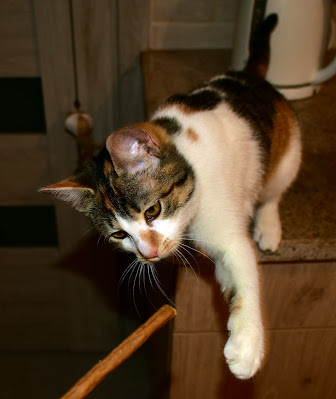Last month I had a go with the AI tools offered by Google (Gemini 1.5 Pro and Imagen 3), and was initially so impressed with the results that I decided to go for the full monthly subscription package. However, once I'd signed up, I soon came to realise that Google's AI offering was massively overhyped and still very much in a developmental phase.
Gemini was consistently unable to answer questions that really aren't particularly tough. The last straw came this morning, when I asked it to give me inflation and wage-growth figures for the UK for the past 20 years. After the boiler-plate apology ("I am still training etc") it offered me a list of the web addresses for pages I already knew. Yes, Gemini, I know where the data is – I was expecting you to extract it and save me about 90 minutes of research work*.
Earlier, I asked it to list me European cities and towns ending with the letters 'in', giving Berlin, Dublin, Lublin and Turin as examples. It couldn't. (At least it was honest about's its inability – Elon Musk's Grok AI offered me the following: "Here are several more European cities and towns that end in the letters "in": Århus (Denmark), Belfast (Northern Ireland, UK), Bergen (Norway); Birmingham (England, UK), Bratislava (Slovakia, but commonly referred to as "Pressburg" in German, which doesn't end in "in"), Cardiff (Wales, UK) followed by another 25 laughable attempts; the nearest match being Tallinn (Estonia)**.
On images, with one or two exceptions, Gemini has failed me. All too often it comes up with a lame excuse for not even trying (prompt: "the politburo of the Chinese Communist Party laughing at CCTV images of London streets"; result: "Sorry, I can't help with images of people yet."). Grok managed extremely well here! My request to include a drummer in the post-apocalyptic image I prompted (for this post) could not be met, so again I used an image generated by Grok. Typically, when Gemini does a reasonably decent image in a first attempt, subsequent tweaks to the prompt result in a worse image than the first one. Grok, on the other hand, in its freeware version, offers you four images, all rendered simultaneously in real time before your very eyes. Pick the best of the four and prompt it to improve.
In all honesty, in a month of using Google Gemini 1.5 Pro, I could see absolutely nothing about it that's in any way better than freeware offerings from OpenAI or Grok (I have yet to try Claude by Anthropic and I won't be using DeepSeek). I had been using OpenAI's Chat GPT from shortly after its launch; that was groundbreaking (and free). A huge productivity benefit when used in the workplace environment, summarising reports, re-writing texts or drafting emails. But I have not been convinced in the slightest that a paid-for upgrade to a pro-version AI is worth it. On the contrary, I do not want to be paying Google to train its AI system, and so I have pulled the plug on Google Gemini 1.5 Pro.
Plus the price – in Poland it costs 97.99 złotys a month, which is double what I am paying Google for YouTube Premium, which is truly excellent value for money.*
* Postscript: After cancelling the subscription (which is due to run out on 21 January), Google offered me access to Gemini Advanced 1.5 Pro with Deep Research. Now this is better! Within minutes it had scoured the ONS website and dug out the relevant data that I had requested. I have three weeks to use this; if the advanced version shows a marked improvement in performance, I shall re-subscribe!
* Post-postscript: On the European towns and cities ending in the two letters 'in', Gemini Advanced 1.5 Pro is still unable to answer correctly: "I've compiled a list of European towns and cities ending in "in". Please note that this list may not be exhaustive, as there are many smaller towns and villages across Europe. Here are some examples: Esslingen, Göttingen, Ingolstadt, Tübingen... " It continues in similar vein across other European countries; most are laughably wrong "Debrecen, Győr, Kecskemét, Pécs..." In its favour, Gemini did dredge out Koszalin, Bodmin, Kolín, Litvín (both Czechia) and El Espín (Spain). Asking it to edit out all the names not ending in the letters 'in', I waited several minutes before receiving the news that 'something went wrong'.
*** Post-post-postscript: Google informs me by email that the 97.99zł/month is for my old storage deal (100GB of data) as well as the AI. The former cost me 47.99zł/month which is entirely acceptable, so access to the AI actually costs 40zł/month. This reframes the question of utility cost. I have three weeks to reconsider...
This time two years ago:
Rational vs. magical thought
This time four years ago:
Longevity, telomeres and exercise
This time five years ago:
A day of most profound sadness
This time four years ago:
Vintage aerial views of the ground
This time eight years ago:
Adventures of a Young Pole in Exile - review
This time nine years ago:
Ealing in bloom
This time ten years ago:
Keeping warm in January
This time 11 years ago:
If you can't measure it, you can't manage it (health, that is)
This time 12 years ago:
Sten guns in Knightsbridge (well, Śródmieście Południowe, actually)
This time 14 years ago:
To The Catch - a short story (Part II)
This time 15 years ago:
Greed, fear, fight and flight - and the economy
This time 16 years ago:
Is there an economic crisis going on in Poland?











































.jpg)











